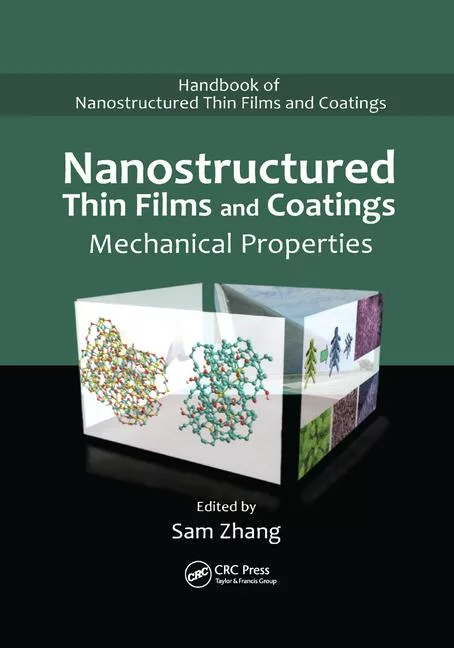Safely Transporting Essential Ingredients

Creatas Video+ / Getty Images Plus, via Getty Images
Chemicals power our lives. You can’t touch anything around you that hasn’t been brought to you by chemical production. The paint on our cars, the medications we take, even the municipal water we drink, all owe their safety and effectiveness, if not their very existence, to chemicals.
Chemical manufacturers, the chemical distribution industry, paint and coatings professionals, and other industry users of chemical formulations understand and embrace this concept. We also know that chemicals are vital to our economy. The chemical industry represents approximately 25% of the U.S. gross domestic product, and 95% of all products manufactured in the United States use chemical products.
Unfortunately, the average American, or even state legislators, senators, and representatives in Washington, D.C., do not always view chemicals through a similar lens. Instead, they see headlines about the harm some chemicals can do to the environment and human health. With the recent devastation resulting from the derailment in East Palestine, Ohio, of a train carrying vinyl chloride and other transportation incidents involving hazardous chemicals throughout the country, the time seems right to answer the question of why it’s essential that chemicals continue to move across the nation. This article will explore the expertise, steadfast commitment to safety, and overarching mindset of responsibility that is invested to get sometimes hazardous, but essential, chemical ingredients where they need to go.
Chemicals are Essential
Chemicals contribute to improvements in health, safety, comfort, and convenience in every facet of our lives, including:
- Medicine and health care: Chemicals are the basis for many pharmaceuticals, medical treatments, and medical devices. They help cure diseases, alleviate pain, and improve overall health. Vaccines, antibiotics, and pain relievers are just a few examples of chemical-based medical advancements that have saved lives and improved our quality of life.
- Food and agriculture: Chemicals such as fertilizers, pesticides, and herbicides have revolutionized agriculture, enabling higher crop yields and more-efficient food production, and contribute to better food security and improved nutrition across the globe.
- Clean water and sanitation: Chlorine and other disinfectants are essential in water treatment processes, ensuring our drinking water is safe and free from harmful bacteria and viruses. Chemicals are also omnipresent in the production of soaps, detergents, and other cleaning agents that help maintain hygiene and sanitation.
- Personal care and cosmetics: Shampoos, toothpaste, sunscreen, deodorant, and makeup help us maintain personal hygiene, protect our skin, and enhance our appearance with the help of chemistry and chemical ingredients.
- Textiles and clothing: Chemicals used in the production of various textiles and synthetic fibers make clothes more durable, comfortable, and versatile.
- Energy production: Chemicals play a crucial role in the production, storage, and transmission of energy, from the extraction and refining of fossil fuels to the development of renewable energy technologies like solar cells and batteries.
- Transportation: Fuels, lubricants, and other materials for vehicles improve efficiency, safety, and comfort. Chemistry drives many advancements in battery technology and alternative fuels that contribute to the development of more environmentally friendly transportation options.
- Electronics and communication: Chemicals are used in the production of electronic components, such as semiconductors, display screens, and batteries, which are essential for smartphones, computers, and other electronic devices that have transformed the way we live our lives.
- Construction and infrastructure: Materials such as cement, steel, and plastics, as well paint, adhesives, and insulation materials essential to modern buildings and infrastructure, depend on chemicals to make them more durable, energy efficient, and comfortable.
- Safety and security: Fire extinguishers, smoke detectors, and protective clothing owe their protective properties to chemistry.
For all these reasons and more, it is essential that chemicals – many of which are considered TICs, or toxic industrial chemicals – move safely across the globe and throughout the United States. When chemicals reach their destinations, they are formulated into the ingredients of our everyday lives and used to develop ways to tackle some of our most pressing challenges, like helping scientists think about how to address global warming through the development of innovative technologies such as carbon capture, the production of biofuels, or converting CO2 into valuable products.
Transporting Essential Chemicals
The transportation of chemicals is a critical aspect of the chemical supply chain, ensuring that raw materials, intermediates, and finished products reach their intended destinations safely and efficiently. The primary methods of transporting chemicals include maritime (ships), road, (trucks), and rail (trains).
Maritime transportation is essential for importing ingredients that are not widely available in North America. Throughout the pandemic, while ocean shipping companies reaped record profits on the backs of small businesses and chemical distributors, the carriers also regularly denied vessel space and the equipment needed to transport hazardous materials overseas. Ensuring timely import of those essential ingredients was a national imperative, and under the Ocean Shipping Reform Act of 2022 the U.S. Government Accountability Office (GAO) now has the tools it needs to further investigate systemic discrimination against the transportation of essential hazardous materials.
Rail transportation is a dependable, cost-effective, and energy-efficient method for moving large quantities of chemicals over long distances. Specialized railcars, such as tank cars, are designed to safely contain and protect the materials during transit. According to the Association of American Railroads (AAR), freight railroads moved 2.3 million carloads of plastic materials, fertilizers, and other chemicals in 2022.1 According to the American Chemistry Council (ACC), 99.9% of all hazardous materials moved by rail reaches its destination safely.2
Unfortunately, the derailment of freight rail tank cars carrying vinyl chloride in East Palestine, Ohio, is a stark reminder that accidents in chemical transport can, and do, happen. Whatever the National Transportation Safety Board (NTSB) ultimately determines caused this derailment, the freight rail industry has had clear and consistent warnings that its systemic program – known as Precision Scheduled Railroading (PSR) – is off-track, prioritizing profits over the health, safety, and welfare of its employees and the communities through which freight rail traverses.3
It's clear that we can’t take a passive approach to rail safety any longer. The solution isn’t to stop transporting hazardous substances. The vinyl chloride in the East Palestine incident is integral to good adhesion, flexibility, water resistance, and chemical resistance in countless products and applications. It is essential, like so many of the other chemical materials moved throughout the country. Rather, we need comprehensive reforms to improve rail safety and service. Congress is currently looking at approaches to address rail safety in measured, yet effective, ways. It will be critical that both parties work together to find common ground on provisions to address freight rail operational challenges, training and inspection requirements, train length, enhanced safety measures, and infrastructure improvements to ensure a safe and reliable freight rail system in the years to come.
Transportation of chemicals by truck is also an essential part of the chemical supply chain. Trucking provides a flexible and convenient method for transporting chemicals, especially for shorter distances and last-mile deliveries. Like rail, the transportation of hazardous chemicals by truck is subject to strict safety regulations and guidelines to minimize the risk of accidents, spills, and environmental contamination.
Each of these transportation modes has its advantages and limitations. The choice of method depends on factors such as the type and quantity of chemicals being transported, the distance to be covered, the required delivery time, and the associated costs. What isn’t a choice to be made are the safety regulations and guidelines that must be followed.
Laser-Focused Commitment to Safety
Behind the scenes, chemical distributors and their affiliates work tirelessly to ensure that the chemicals we rely on are safely handled and delivered for their use in downstream industries. Professionals in paint and coatings, medical devices, sanitation, and countless other industries work hard to keep these chemicals moving, to ensure business can flow seamlessly for the thousands of downstream industries that rely on them, and to provide the millions of products and services for the people who use them.
As an integral part of the paint and coatings supply chain, members of the National Association of Chemical Distributors (NACD) place the highest priority on the environmental performance, health, safety, and security of our employees, customers, communities, and environment. For us, safety is more than a box to check off. It’s a commitment to ensuring everyone from the boardroom to the warehouse is engaged and invested in NACD Responsible Distribution®, our mandatory third party-verified environmental, health, safety, and security program. That commitment helps lower occurrences of safety and environmental incidents when essential substances are in our hands.
We use and transport chemicals because the world and our nation need them. Chemicals power our lives. It’s up to us who work with them to live up to the highest safety standards and advocate for all our transportation and supply chain partners to do the same.
References
1 Association of American Railroads. Freight Rail & Chemicals: Safely Moving a Commodity that makes Modern Life Possible. https://www.aar.org/issue/freight-rail-chemical-industry/.
2 American Chemistry Council. Rail Safety. https://www.americanchemistry.com/better-policy-regulation/transportation-infrastructure/rail/rail-safety.
3 National Transportation Safety Board. Norfolk Southern Railway Train Derailment with Subsequent Hazardous Material Release and Fires. https://www.ntsb.gov/investigations/Pages/RRD23MR005.aspx (March 21, 2023).
Looking for a reprint of this article?
From high-res PDFs to custom plaques, order your copy today!







